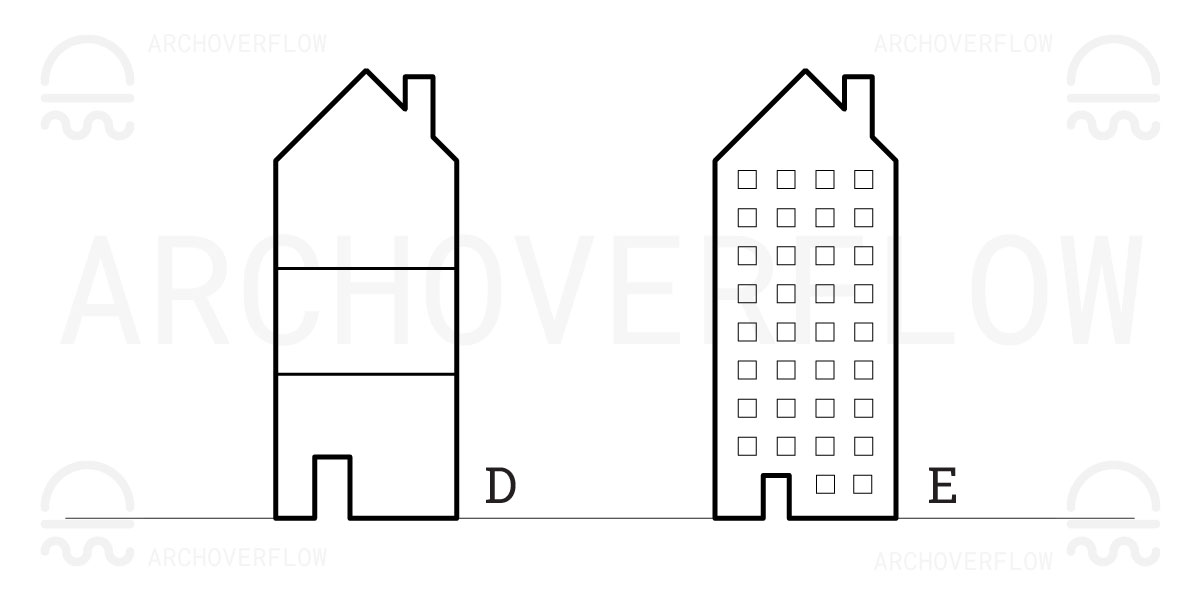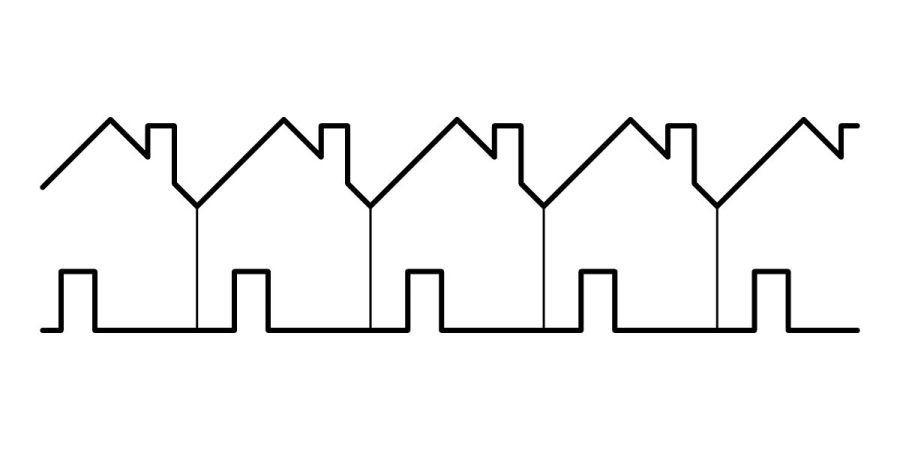Introduction
Urban planning deals with the design of urban (city) spaces, and the most fundamental piece of it is housing. This is because the vast majority of land area will be utilized for housing, and is something every single person interacts with at some level (we all need a place to sleep, we don’t all need a place to worship, to work, to workout, etc).
Different Types
Due to this, several different housing typologies have been developed and standardized over time, each with their own advantages and disadvantages. A designer should be generally aware of each. A successful urban area will typically mix and blend the various housing types with other spaces such as parks, communal, civil service, etc. Providing a bunch of different housing typologies will make the area appeal to the widest population demographics. Additionally, various transportation methods should be integrated offering multiple ways for people to get access to work, recreation, etc.
Typologies
Below are listed the major typologies. Note that in the real world, these aren’t strict boxes or compartments for each different structure to fit within, and there is various overlap and gray area between all the various types.

A. Single Family House
Structure is occupied by one household/family and consists of a single detached structure. A “family” can be defined very loosely depending on culture.
Positives
- Provides many sides of exposure on the structure, so it allows lots of natural daylight and space for a garden, playing, and typically space for outside activities/connections.
- Direct access to outside (nature) and street/sidewalks.
- Can be easily screened from view and shielded from noise – the building can be quite a bit detached allowing nature to surround it.
- Typically built at a reasonable cost
- Different styles grouped together create a composition of culture, or similar styles grouped together provide continuity.
Negatives
- Relatively large area of land required; this is the lowest density of people per area of all the housing typologies, and therefore is easy to slip into ‘urban sprawl’.
- Loss of communal open space, more of the area is ‘privatized’ for the properties yards.
- While space is a positive, there is nothing guaranteeing it… and once you squeeze about 5+ units per acre, advantages of space, privacy and noise are all diminished.
- Too many of the same exact building or style can be monotonous and boring.
- Not suited well for people who live alone, and can be thought of as ‘wasteful’ if inhabited by 2 or less people.
B. Two Family Duplex
A single family house, with another one attached to it typically on the side or the top.
Positives
- Less costs than a single family home as some costs such as bringing utilities to the building are shared between two parties.
- Creates a higher density of living, meaning more people can fit in a smaller area, however it still keeps a lot of the advantages for access to nature, light, privacy, etc.
- Depending on how it’s built, you will save a bit on energy costs due to the shared wall.
Negatives
- Neighborhoods of this type are typically very repetitive as the economies of scale come into play (so boring/monotonous).
- Sometimes maintenance can be tricky due to the shared legal wall/floor.
- Much closer proximity to the neighbor can lead to issues with privacy and sound.
C. Row House
A series of three or more attached units all placed side by side in some manner. Many local codes prevent more than 8 of these in a row for fire/life safety and other considerations.
- Typically 2 stories high, sometimes with a basement.
- Typically 20 to 35 feet wide.
Positives
- Typically built in more dense downtown areas, where many live in highrises, this housing typology provides greater privacy comparatively.
- Very efficient use of land as there are no side yards on the interior units. You access the back yards through each unit which also provides more security to the backyards.
- Holds the ‘street wall’ and creates a uniform structure/edge to the street.
Negatives
- Many of the same negatives from the duplex are the same, and these typically are amplified. Such as maintenance and sound control between units can be tricky.
- Loss of individuality if the row homes lack design diversity and therefore, as before, can be monotonous.

D. Walk-Up Apartment
An apartment building defined by the ability for all occupants to ‘walk up’ the stairs to access their apartments. In many codes, this is limited to 3 stories in height, and anything above 3 stories requires an elevator. Note, a 4 story and above could be considered a walk up apartment in some conditions.
Positives
- Combines efficient use of land with a comfortable human scale; the buildings aren’t hard to relate to where they are 10+ stories towering over the street.
- Apartment style living at relatively low densities; can provide some aspects of apartment style amenities such as off street parking, shared laundry, etc while being at a low density.
- Typically provide a diverse community through a broad range of tenant mix
- Cost effective as most can be rented
Negatives
- Individual ownership is lost as its typically rented, therefore respect and treatment for the units diminishes.
- Spaces are smaller and more compact, providing less room for the residents. It’s unlikely that the units have flexible multi-purpose space to provide for home offices, workshops, etc.
E. High-Rise Apartment
A tall building that provides a large number of units in a very small footprint of land. These are at least 1 unit per floor, and typically in dense downtown areas where land is sparse. Fire and life safety in these structures is a concern as the buildings get taller, and density goes up.
Positives
- Fits a lot of people in a tiny space, this is extremely ‘sustainable’ from the perspective that you are using less land (natural resource) to house more people. This of course means it conserves more open space for parks and other things.
- Can offer good amenities to the residences. This follows the power in numbers that the larger the number of units, the more diverse amenities.
- Can provide a wide range of residential unit types from studio apartments to larger 4 and 5 bedroom units.
Negatives
- Potential for traffic and pedestrian congestion if not properly accounted for.
- Fire and Life safety are a main concern. Many times code requires offsets and access so that fire trucks are able to access all sides of a building.
- Elevators, security, amenities, etc. contribute to higher costs for the building overall.
- Poorly designed and sited buildings can be detrimental to the cityscape of others




Leave a Reply
You must be logged in to post a comment.